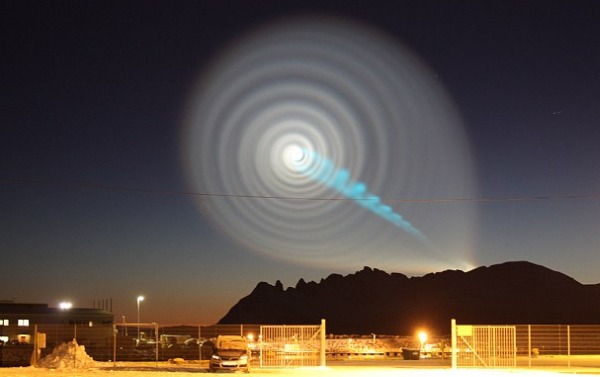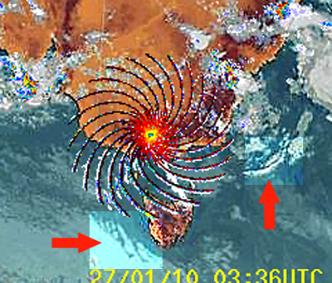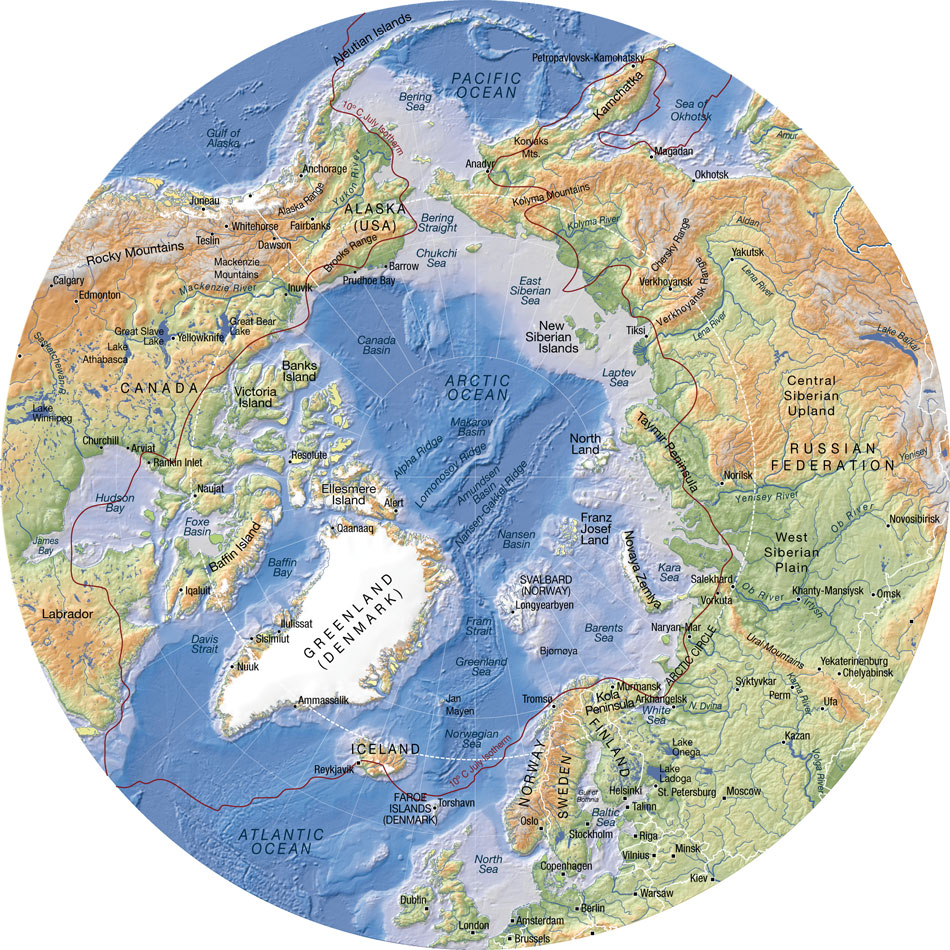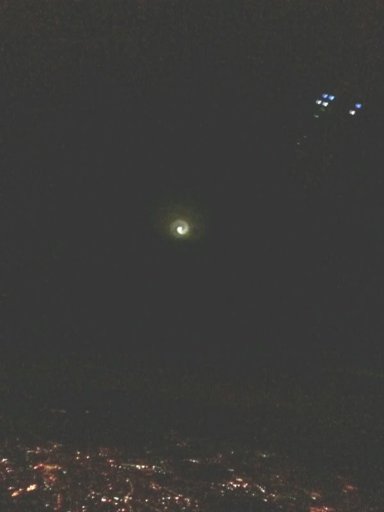In December 2009, an unprecedented spiral appeared over Norway.

So was it really a failed Bulova missile launch or was it caused by EISCAT, the European version of HAARP?
Despite early denials that they had launched a missile, the Russians quickly recanted and admitted responsibility and a failed launch. So, why would the Russians be so willing to accept responsibility, (and embarrassment), if they were not responsible?
But significantly, the phenomenon appeared near Tromso, which is also the location of EISCAT. if the missile malfunctioned over the White Sea as reported, it should have been visible in northern Russia, Finland and Sweden as well as Norway and yet no sightings were reported in Finland or Russia.
Further, since then there have been many similar spirals worldwide, showing up both visually and on radar.
Australia appears to have the best documented examples of this.
This is undeniably an interesting phenomenon which is apparently becoming more and more prevalent, (although there are some very dubious instances). Also, is it linked to at least some of the strange noises which have been heard worldwide of late?
Below is an interesting paper on the spiral's origin, trajectory and dimensionswhich actually tracks the source to the Russian White Sea.
http://www.spellconsulting.com/reality/Norway_Spiral.html

So was it really a failed Bulova missile launch or was it caused by EISCAT, the European version of HAARP?
Despite early denials that they had launched a missile, the Russians quickly recanted and admitted responsibility and a failed launch. So, why would the Russians be so willing to accept responsibility, (and embarrassment), if they were not responsible?
But significantly, the phenomenon appeared near Tromso, which is also the location of EISCAT. if the missile malfunctioned over the White Sea as reported, it should have been visible in northern Russia, Finland and Sweden as well as Norway and yet no sightings were reported in Finland or Russia.
Further, since then there have been many similar spirals worldwide, showing up both visually and on radar.
Australia appears to have the best documented examples of this.
This is undeniably an interesting phenomenon which is apparently becoming more and more prevalent, (although there are some very dubious instances). Also, is it linked to at least some of the strange noises which have been heard worldwide of late?
Below is an interesting paper on the spiral's origin, trajectory and dimensionswhich actually tracks the source to the Russian White Sea.
http://www.spellconsulting.com/reality/Norway_Spiral.html
the "Norway Spiral," was observed by many on the dawn of December 9th, 2009. Despite the official cause being reported as a Russian missile failure at high altitude, this event has continued to generate much debate and controversy over its origin and nature. Part of the debate has centered around pinpointing the actual location of this phenomenon, as it was primarily witnessed from the northwest regions of Norway, leading some to conclude that it must have occurred over Norway, while others argue that it was much further east over Russia. In this study, we focus only on the location and progression of the event, through the process of intersecting multiple vectors or "lay lines" established through the superposition of Norway's ubiquitous mountainous backgrounds in Google Earth's 3D terrain model, with photographs of this phenomenon at known locations. The results locate the event over the Russian Kola Peninsula and province of Murmansk near the west coastline of the White Sea. The development of the spiral occurred approximately 60 miles (97 km) inland (west) of the White Sea then traveling northeast across the peninsula and out over the Barents Sea, with the final dissipation of the spiral occurring approximately 143 miles (230 km) northeast of its initial development and some 70 miles (113 km) offshore. In addition, the center of the spiral was calculated at a very high altitude ranging from 107 to 166 miles (172 to 267 km) during its progression, with the initial size of the spiral measured at approximately 95 miles across (153 km). At the time of dissipation and expansion of the void, the spiral grew to an approximate scaled width of 391 miles (629 km), reaching a remarkable altitude along the upper edge some 351 miles (565 km) above sea level. Due to these great altitudes, exceeding the established astronautics/aeronautics boundary of 62 miles (100 km), this event occurred primarily in space, and therefore was not subject to significant atmospheric effects. Although the spiral appears to be slow moving in the video, the vast distance of the observation from over 530 miles (853 km) only gives this illusion. From the video frame captures and the subsequent vector analysis, the estimated velocity of the spiral center along the trajectory was found to exceed 8,000 mph (12,875 kph). The combined expansion of the void and the north-northeast trajectory of the center, give an estimated velocity of the leading edge of the void (northward) at an incredible 13,000 mph (20,920 kph).
Last edited by a moderator:




